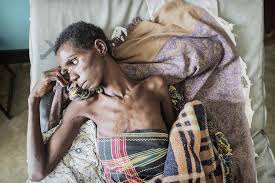Tsholotsho district in Matabeleland North is confronting a dire crisis with a significant shortage of anti-retroviral (ARV) medication, despite being home to the highest population of individuals living with HIV in Zimbabwe.
According to a recent parliamentary report presented by Senator Angeline Tongogara, the district is coping with 18,404 individuals affected, which includes 10,778 women, 5,755 men, and 977 children.
The healthcare facilities are struggling to keep a sufficient stock of ARVs, with providers reporting frequent shortages, leading to drastic measures such as repackaging the available drugs into smaller doses.
In extreme cases, medications expected to last for three months are being cut down to just one week, highlighting the severity of the issue.
To address this shortfall, some antiretroviral treatment (ART) centers are resorting to borrowing supplies from other facilities, a temporary fix that underscores the urgency of the crisis.
Senator Tongogara emphasized that while local healthcare providers have historically managed to avoid sending patients away empty-handed, they are now grappling with the challenge of ensuring continuous supply amidst high demand and patient mobility.
The installation of the Malayitsha Model aims to combat treatment default by allowing individuals traveling from neighboring countries, such as South Africa, Botswana, and Mozambique, to receive their medications more regularly.
Compounding the issue, many residents are faced with long treks, often exceeding ten kilometers, to reach the nearest health facility for essential consultations and supplies.
Tsholotsho South legislator Musa Ncube recognized the challenges posed by these distances but was previously unaware of the acute ARV shortages affecting the district.
She pointed out the significant advancements made towards improving healthcare access, citing the establishment of new clinics in places like Mbamba, Jowa, Inala, and Chibizela.
However, the findings from visits to other districts, such as Mberengwa, Chivi, Guruve, Mutawatawa, and Zvimba, reveal that the lack of healthcare resources and drug shortages is a widespread issue throughout Zimbabwe.
Calls for urgent intervention are intensifying, seeking not only a robust and steady supply of ARVs but also a substantial enhancement of healthcare infrastructure to better serve the needs of those living with HIV in these challenging and often remote rural settings.
The situation necessitates immediate attention from government bodies, NGOs, and international organizations to mitigate the growing crisis and ensure that essential medical care reaches those who need it most.
Without prompt action, the health and well-being of thousands of individuals could be compromised, exacerbating an already critical public health dilemma.










